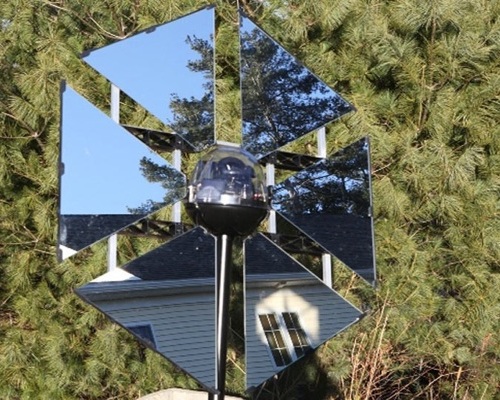If you miss sun light in your apartment because your apartment falls in the shadow of another building then you are not alone. It can be the source of your alternative income?
Background and Requirement
By experience I have seen that at least 5% of all apartments in an apartment complex falls in the shadow and do not get sufficient sunlight. If I consider 100 apartments in each apartment complex, 10 apartment complexes per sector and 23 sectors in Dwarka then 100*10*23*5% = 1150 apartments do not get sufficient sunlight in Dwarka itself. If I extrapolate it to Delhi then ~30,000 apartments do not get enough sunlight (extrapolated based on area of Dwarka 56 sq km and that of Delhi 1484 sq km). If I half this number then too 15,000 apartments in Delhi do not get their share of Sunlight. Your venture is to provide sunlight to these homes during daytime using Solar Lighting Devices.
Kind of Solar Lighting Devices
Direct Solar Reflector
This device collects and reflects sunlight directly to window/opening. This device can be placed on a building adjacent to the target building or on ground.
Pros
- They are cheaper than Optic Fiber system.
- They have longer life
- They need less maintenance because of fewer parts. Maintenance is mainly on cleaning the reflector and maintaining Sun Tracking Device (the device that moves reflector as sun moves).
Cons
- Your customer apartment/building should have a window to receive sunlight.
- These reflectors cannot block UV rays and Infrared radiations.
- They may incur additional cost of leasing the space to install these devices because they may need to be installed on ground or adjacent building.
Reference: Wikoda Store
Solar Collector with Optic Fiber
 This device collects light, beams into optic fiber cable/piping and then the instrument in house diffuses the light back to the area where lighting is required. The lighting can also be supplemented with artificial light and sensor can control automatically throughout the day how much of artificial light is required in addition to sunlight. This device can be placed on the rooftop or any place where there is sunlight.
This device collects light, beams into optic fiber cable/piping and then the instrument in house diffuses the light back to the area where lighting is required. The lighting can also be supplemented with artificial light and sensor can control automatically throughout the day how much of artificial light is required in addition to sunlight. This device can be placed on the rooftop or any place where there is sunlight.
Pros
- They can be used in apartments that are deeply shadowed by other buildings, basements and in apartments there are no windows to get reflect light.
- They can be combined with supplemental artificial light.
- They can block UV and infrared radiations and just bring light radiations to home.
Cons
- They are costlier than Direct Solar Reflector
- They have higher Maintenance Cost
- They have shorter life.
Reference: Cool Light on Hot Days: Fiber Optics Bring the Sun Indoors
Clientele
The clientele includes Middle class families whose apartments are not receiving enough sunlight especially in winter. This class would be willing to spend money to buy Solar Lighting device.
Capital Requirement
- Cost of Direct Solar Reflector hovers in the range of USD 300 to 400 or Rs 16,500 to 22,000. You may go for franchise of one of the manufacturer and your capital requirement and technical know-how would be lower. I would still believe that the initial capital requirement would be at least 2-3 lakh rupees.
- Solar Collector with Optic Fiber may still be in its nascent state and you may need to search for market-ready version or make one. If you need to make one for yourself then this can be a big manufacturing unit and initial capital requirement would be at least 1 crore.
More Information
Will you start this venture? If yes, go ahead and share your story. If no then keep tuned for next venture idea. Let the Sun brighten your day!
Pingback: Electricity From Rainwater Harvesting » FinHow